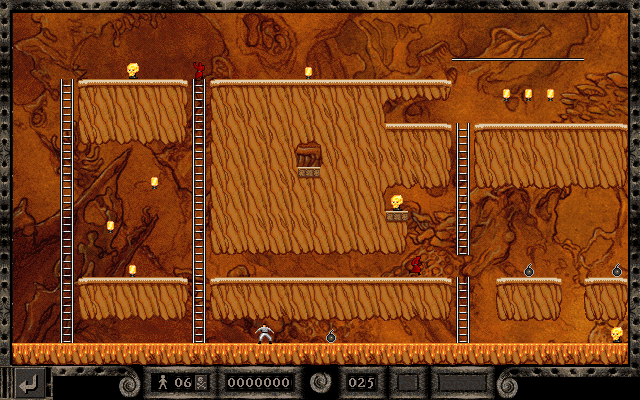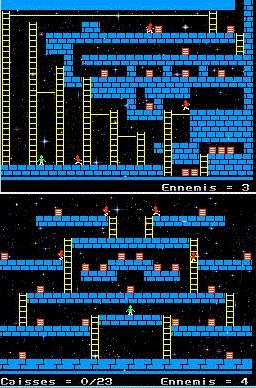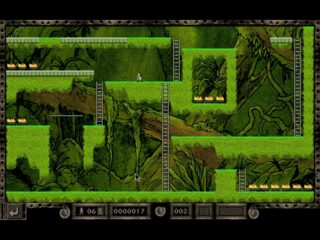
The player can dig holes into floors to temporarily trap guards and may safely walk atop trapped guards. Levels feature a multi-story, brick platform motif, with ladders and suspended hand-to-hand bars that offer multiple ways to travel throughout. There are 150 levels in the game which progressively challenge players' problem-solving abilities or reaction times. After collecting all the gold, the player must travel to the top of the screen to reach the next level.

The player controls a stick figure who must collect all the gold in a level while avoiding guards who try to catch the player. Later versions include those for the Atari ST, Sinclair Spectrum 48K/128K, NES, Windows 3.1, Macintosh, and the original Game Boy. The original microcomputer versions included the Apple II series, the Atari 8-bit family, the Commodore 64 and a Konami version licensed for the MSX computer named " King's Valley". Around Christmas of 1982, he submitted the game, now renamed Lode Runner, to four publishers and quickly received offers from all four: Sierra, Sirius, Synergistic, and Brøderbund. Smith then borrowed money to purchase a color monitor and joystick and continued to improve the game.
#LODE RUNNER LEGEND RETURNS WINDOWS 7 FREE#
He submitted a rough version to Brøderbund around October 1982 and received a one-line rejection letter in response to the effect of "Sorry, your game doesn't fit into our product line please feel free to submit future products."

Through the end of the year, Smith refined that version, which was black-and-white with no joystick support. In a weekend (circa September 1982), Smith was able to build a crude, playable version in 6502 assembly language on an Apple II+ and renamed the game Miner. When Kong was ported to the VAX, some Pascal sections were mixed into the original Fortran code. The game was programmed in Fortran and used ASCII character graphics. Shortly thereafter, Kong was ported to VAX minicomputers, as there were more terminals available on campus. This prototype, called Kong, was written for a Prime Computer 550 minicomputer limited to one building on the UW campus. Smith of Renton, Washington, who at the time was an architecture student at the University of Washington. Revisit this 90’s arcade puzzle classic.The prototype of what later became Lode Runner was a game developed by Douglas E. The Legend Returns was a successful revival of the original and even snapped up an award for Best Arcade Game the year of its release. A level editor is available, like in the original game. The levels are each set in different areas like Moss Caverns, Skeleton’s Keep, Inferno’s Playground, and many more. You also have the use of a drill, jackhammer, snare traps, and other goodies at your disposal. You do have a limited arsenal that includes bombs and booby traps.

Of course as you go the levels become harder and enemies begin to come after you. The game plays as a single screen platformer where your goal is to climb up ladders and clear the levels of treasures in order to progress. There is also the addition of a two-player mode. Graphics, sound, music, as well as character animations. Lode Runner: The Legend Returns keeps very true to the gameplay of the original, but it enhances just about every aspect of it. It was later ported to Playstation and Sega Saturn in 1996.
#LODE RUNNER LEGEND RETURNS WINDOWS 7 SOFTWARE#
It was developed by Presage Software and published by Sierra On-Line in 1994 for DOS, Mac, and Windows 3.x.

Lode Runner: The Legend Returns is the sequel/remake of the original Lode Runner created by Douglas E Smith.


 0 kommentar(er)
0 kommentar(er)
